This piece is based on the Winchester Bible, a 12th century work of amazing rich colour and beauty.
I made this for Sabrina, to celebrate her skill at making medieval jewellery. She had seen my painted banners at an event when she travelled from the USA in 1994 and asked if I would make her Laurel Scroll as a skills swap. In return, she made me a lovely Cloisonné enamel medallion.

This is one of my few early works where I have a picture of the completed piece (a synthesis of 4 scans). I have the sketches for dozens more, but no images of the final works.
Research and Design
The inspiration for the piece is the Winchester Bible, a huge work in four volumes, produced in Winchester between 1150 and 1175 for Winchester Cathedral.
The Bible was written in Early Gothic script, set out in a 2-column, left-justified format. It is decorated with large, brilliantly coloured initials at the top of each chapter. These are outlined in gold and filled with images of people, with brilliantly coloured backgrounds.
Many of the historiated initials in this Bible start a sentence written in Uncial capitals in red, blue and green paint, justified to fill the column. I have adapted this, changing the document text so that I could start with the glorious P illumination. I also used the coloured Uncials to highlight Sabrina’s name.
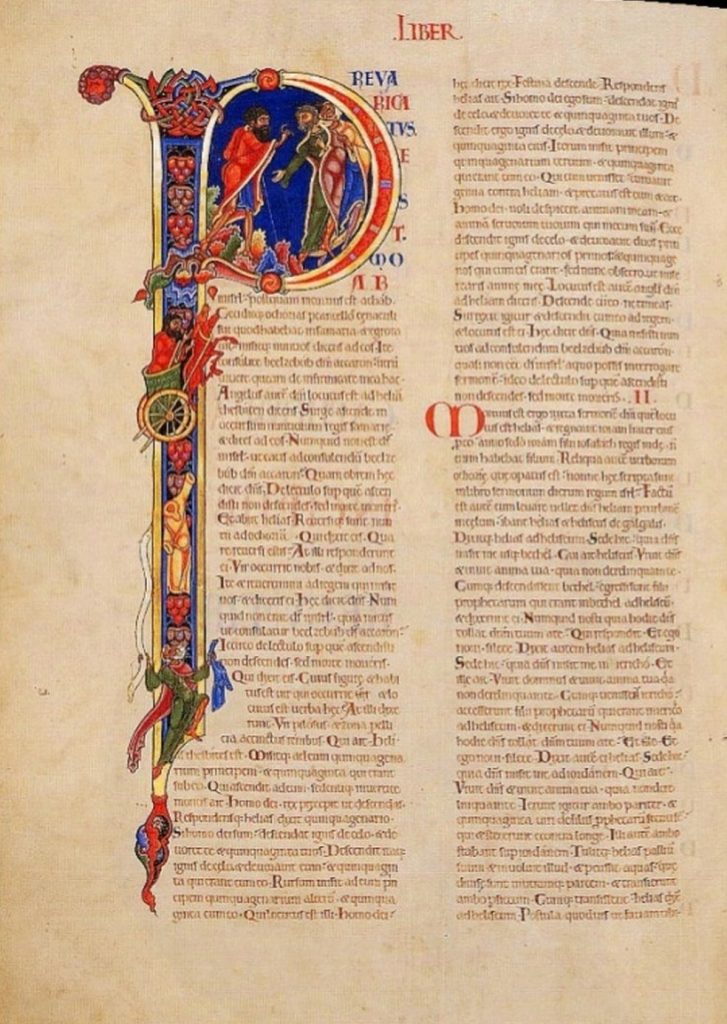
Source: Wikimedia
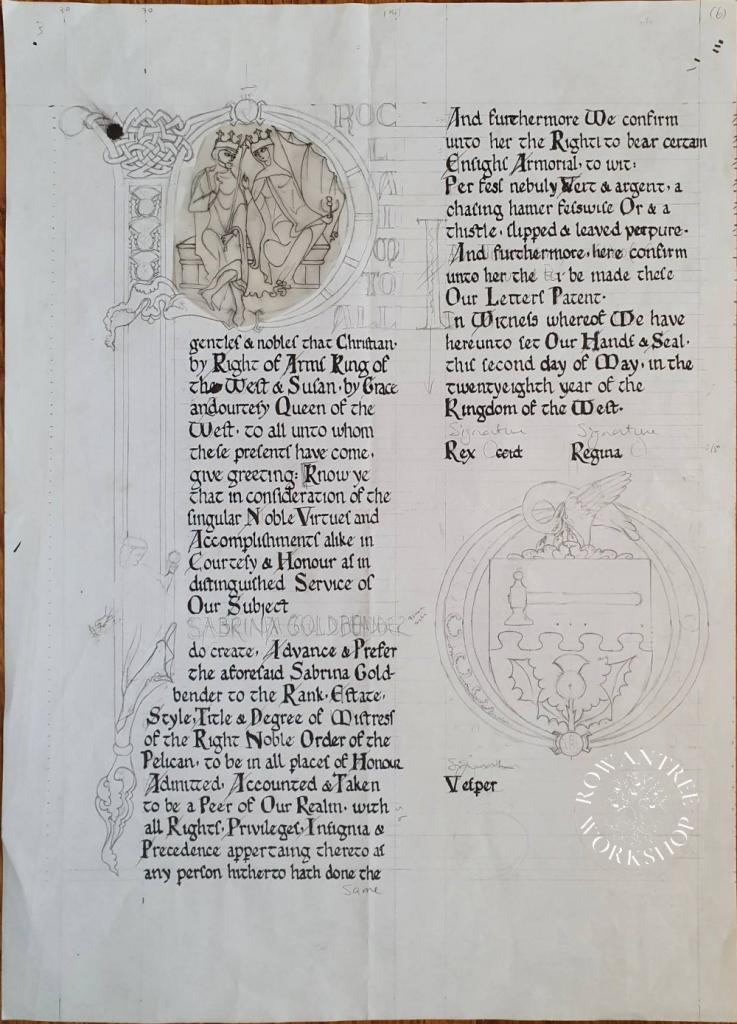
The initial P is taken from the initial depicting the ascent of Elijah, with the figures taken from inside the O in the Song of Solomon (see below). I copied the knotwork, but replaced the original bunches of grapes with her thistles.
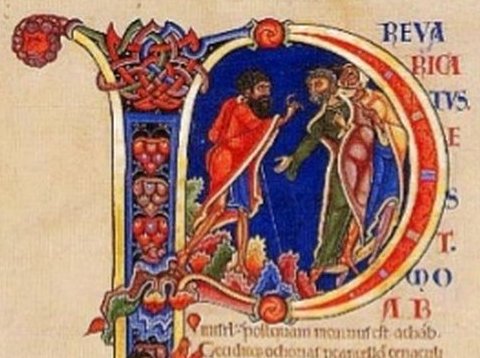
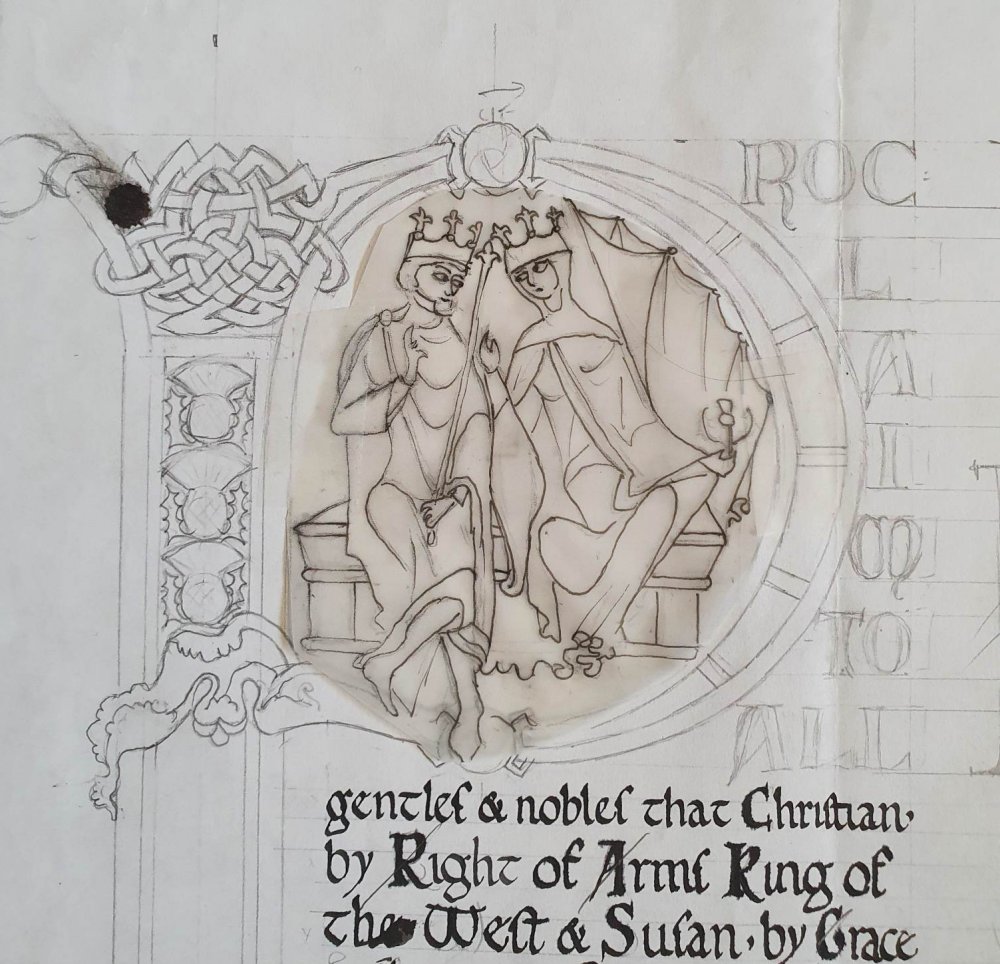
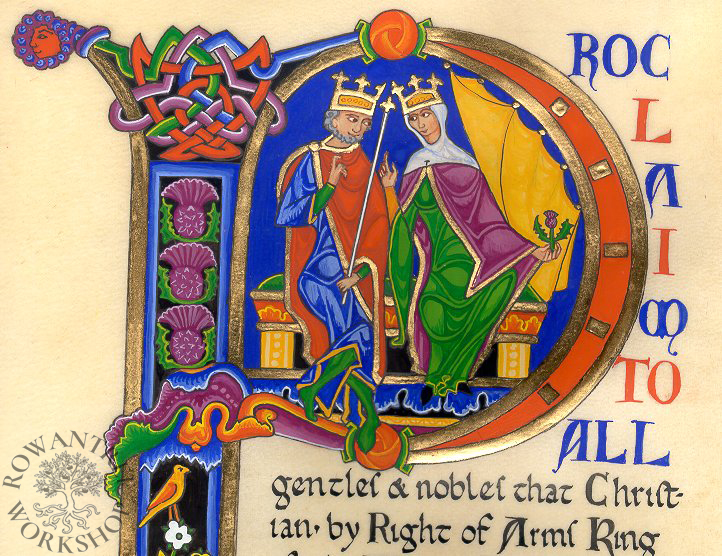
The base of the P original showed Elijah and his chariot. I replaced these with a lady and tree from the Breviary of Marguerite de Bar – adapted to the much earlier style. In place of the hawk, I show Sabrina holding her goldsmith hammer in her right hand, and the medallion she made me in her left. The tree from the same manuscript takes the place of the chariot.

Source: Enluminures
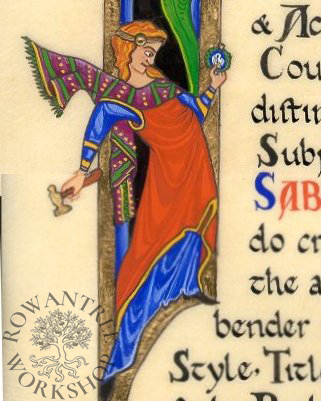

Since there are no depictions of heraldic devices in the Winchester Bible, I have used the O itself to frame up the device, so that it looks appropriate. I drew the pelican in a Romanesque style, to complete this element.

Source: Wikimedia
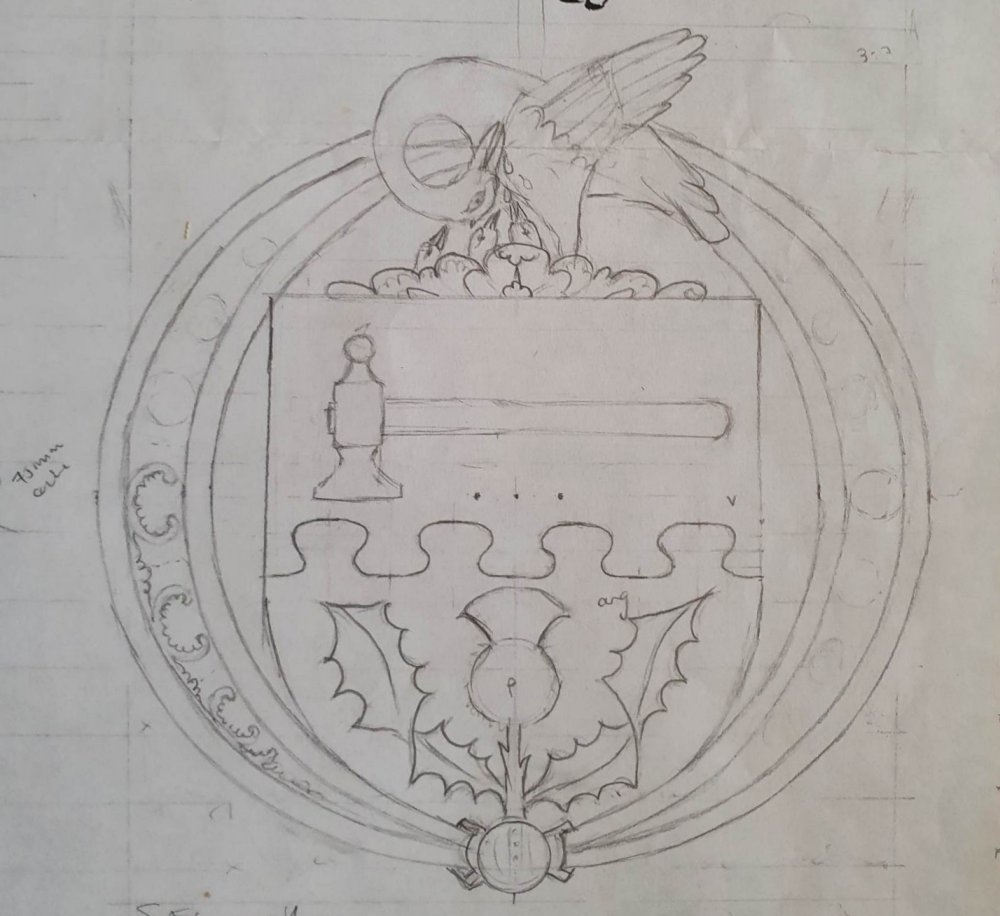
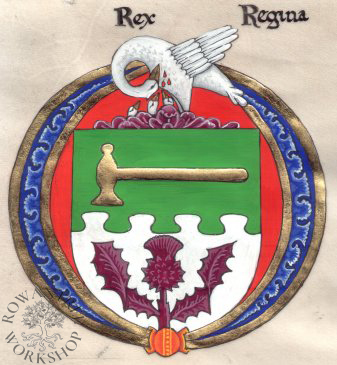
Construction
I wanted to use calf vellum, as per the original manuscript, but it was rare and expensive. I heard a rumour that the Sydney tannery had made some goat parchment, so I went to see. The smell was indescribable, but I came away with several pieces at a good price.
The goatskin was not completely flat, so I dampened it and stretched it out onto a board. Once it was dry, I carefully removed it and trimmed the edges. In accordance with Johnstone (1906), I prepared the skin with pounce made of cuttlefish and gum sandarac, to remove any grease and and give a good surface for writing.
I copied my design to the parchment in pencil using my light-box, then ruled up for the calligraphy. I lettered the piece in a Early Gothic style, using a metal dip pen and Windsor & Newton ink. Once the ink was dry, I used a fine Rotring pen to outline the illumination elements and rubbed out all the pencil.
The goldwork always comes first, for several practical reasons. I made up some gesso according to Cennini (Thompson 1960) and laid this on the gold areas. I scraped it back to make it smooth – as you can see from the dimples in the bow of the P, I should have added a second layer in some areas!
I wet it with glair, waited until it was tacky, laid the 22 carat gold leaf and let it dry. I used a soft brush to remove the excess gold, cleaned up the edges carefully with a knife and burnished it lightly.
I painted the coloured letters in the text in Windsor & Newton gouache, and laid in the main colour areas. Then I worked on one section at a time, adding shading to mimic the distinctive 12th century stylised folds. I added the white highlights, and then went over all the outlines again with a fine pen.
I was really pleased with the end result, and hoped Sabrina would be too. Rather than trust the post, I packaged it up carefully to travel back with a mutual friend who was headed for the USA.
Afterword
My SCA courier left the precious package in his hire car when he dropped it at the airport – I found out when he got back to the USA.
I sent pictures of the scroll to Sabrina, so she knew I had indeed made it. However, she hadn’t received it – our bargain was not fulfilled.
After fruitless enquiries with the cab hire company, I accepted it was lost forever – I had no choice but to start over. I still had the design and some more goat parchment, but it was so difficult to find the motivation and creative again.
I did manage it eventually, and was very glad when I heard it had been safely received.

